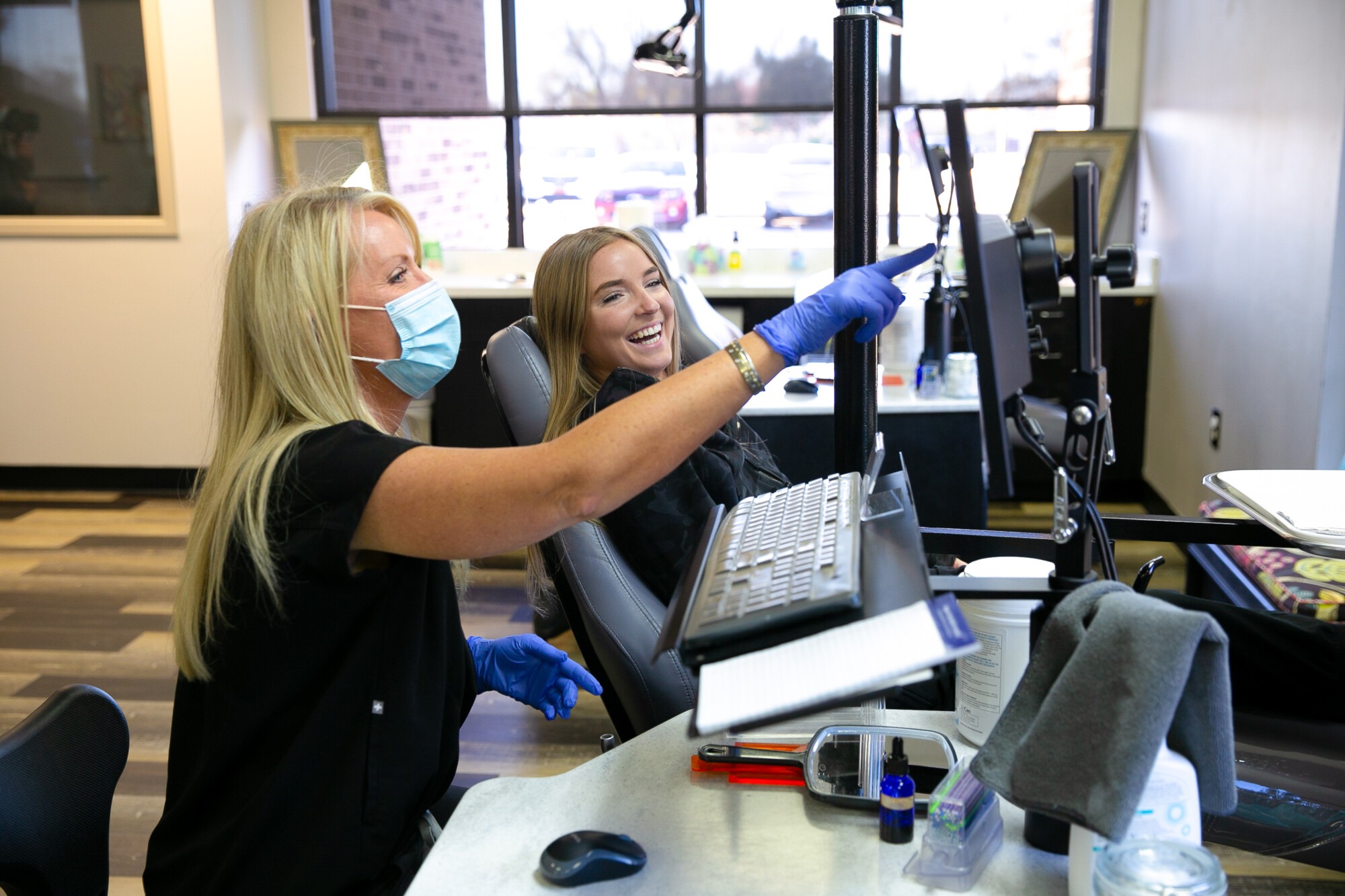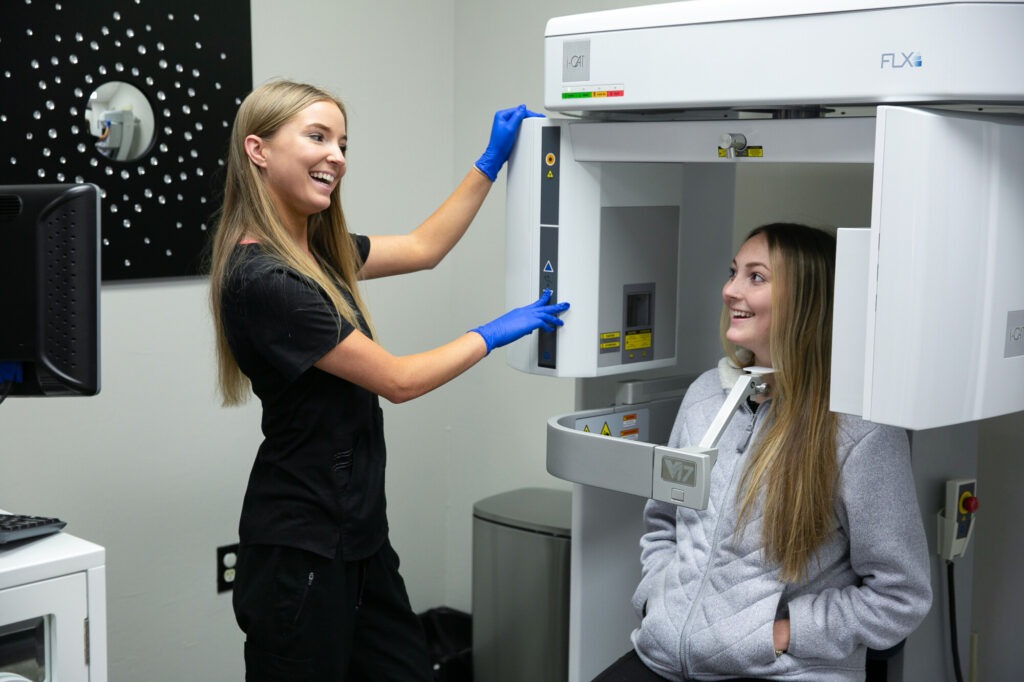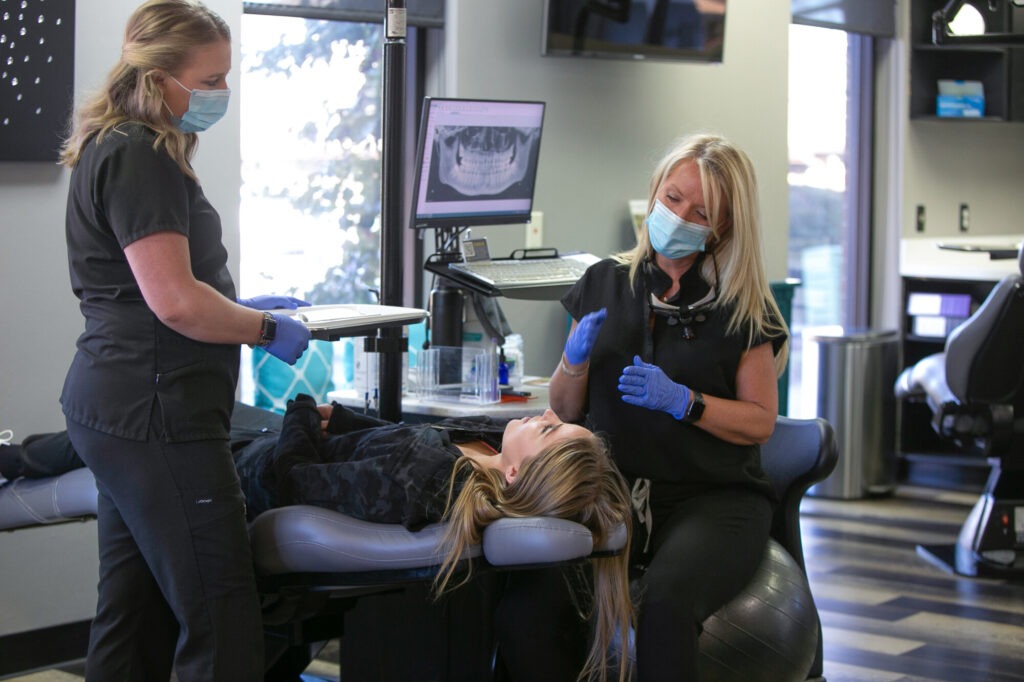At Farrow & Dewbre Orthodontics, we are committed to patient education to minimize the fear of the orthodontic office and help you make informed decisions regarding your treatment. In this month’s blog, we would like to answer the question, “What is surgical orthodontics?” and hopefully reduce the anxiety you might feel when you hear the word ‘surgery.’
What Is Surgical Orthodontics?
Surgical orthodontics is a specialized branch of orthodontic treatment that combines the expertise of orthodontists and oral surgeons to correct complex jaw irregularities when braces or aligners alone cannot adequately address skeletal issues. This treatment is for patients whose jaw has stopped growing and developing. If you have a child with a bite you are worried about, bring them to Farrow & Dewbre Orthodontics to determine if they qualify for two-phase treatment.
Why Do People Need Surgical Orthodontics?
There are many reasons why you might need surgery! Complications in jaw development can be caused by genetics (birth defects and natural growth), environmental factors, or injury. Though unnecessary for most patients, it can be a life-changer to those that do. Let’s look at some of the most common reasons for orthodontic surgery.
- Improved Facial Aesthetics: Surgical orthodontics can correct severe jaw irregularities by aligning the jaws and repositioning the facial structures.
- Enhanced Functional Bite: Correcting skeletal discrepancies through surgical orthodontics can significantly improve the bite. Better teeth and jaw alignment make biting and tearing into food easier and chewing more efficient, reducing the risk of choking and indigestion. It can also alleviate strain on the jaw joints and minimize discomfort associated with misalignment. Improved teeth alignment and jaw functionality also help to treat or eliminate speech impediments.
- Improve Breathing Abilities: By repositioning the jaws and creating a more open airway, the severity of sleep apnea symptoms, such as snoring and interrupted breathing during sleep, may be reduced. Some patients who struggle with mouth breathing have also found relief in surgical orthodontics.
- Boost in Confidence and Self-Esteem: Addressing complex jaw irregularities through surgical orthodontics can transform a person’s self-image by improving facial aesthetics and achieving a more functional bite.
How Does It Work?
Surgical orthodontics involves a comprehensive process that combines orthodontic treatment with surgical intervention to correct complex jaw irregularities. Though the specifics of the process vary to best suit your needs, most patients will go through the following:
Step 1: Comprehensive Evaluation and Treatment Planning
The process begins with a thorough evaluation conducted by an orthodontist like Dr. Farrow or Dr. Dewbre. If necessary, they will refer you to an oral surgeon (who will perform the procedure) for further evaluation. These assessments include a detailed examination, X-rays, and advanced imaging techniques like 3D imaging to allow our orthodontists and your oral surgeon to understand the extent of the jaw irregularities and plan an appropriate treatment approach.
Step 2: Orthodontic Preparation
Orthodontic preparation ensures the teeth are in the most advantageous positions before the surgical procedure for a smoother process. Before surgery, our orthodontist team will prepare your teeth and dental arches for the surgical phase using fixed or removable braces.
Step 3: Surgical Phase
The surgery is typically conducted in a hospital setting under general anesthesia for the patient’s comfort and safety. During the procedure, the surgeon precisely repositions the jawbones to correct the skeletal irregularities identified during the evaluation phase.
Step 4: Post-Surgical Orthodontics
After the surgery, the patient enters the post-surgical orthodontic phase, which involves continued orthodontic treatment to fine-tune the bite and ensure optimal alignment. Our orthodontists work closely with the patient to monitor progress, make adjustments, and guide the teeth into final positions. Post-surgical orthodontics is crucial in achieving long-term stability and the desired functional and aesthetic outcomes.
Close collaboration between Dr. Farrow, Dr. Dewbre, and the oral surgeon is essential throughout the process. Regular communication and coordination ensure the treatment plan is executed smoothly and the patient’s needs are addressed effectively. The surgical orthodontic process requires commitment and patience from the patient, as it involves multiple phases and may take several months to complete. However, the end result is worth it!
Visit Farrow & Dewbre Orthodontics For More Information!
We hope this comprehensive guide to surgical orthodontics has shed light on this specialized branch of orthodontic treatment and its potential benefits in correcting complex jaw irregularities.
If you or a loved one are dealing with severe malocclusions, facial asymmetry, or skeletal discrepancies, surgical orthodontics may be the solution you’ve been searching for. Our board-certified orthodontists are dedicated to providing personalized care and achieving exceptional results for each patient so you can feel comfortable and confident at every step.
Schedule a complimentary consultation with our experts at Farrow & Dewbre Orthodontics to learn if surgery is in your treatment program. Our team will guide you through the evaluation process, answer any questions or concerns you may have, and create a customized treatment plan designed to address your jaw irregularities effectively.


